With the cost of living and other economic factors in sharp focus, information on employment is invaluable. This article summarises a range of data published on the labour market in Wales.
What do the latest figures show?
The key trends in the labour market are:
- In the UK the number of unemployed people per vacancy was 1.1 in October to December 2022, up from the previous quarter (July to September 2022).
- Across the UK, Northern Ireland had the highest inactivity rates (26.3%), followed by the North East of England (25.7%) and Wales (25.5%).
Inflation is currently exceeding wage growth causing the real value of wages to fall. There are signs of the levels of vacancies starting to fall and this will be expected to continue with economic growth stagnating and interest rates expected to rise.
Number of payrolled employees
ONS has been working with HMRC to produce timely estimates of employees being paid through the pay as you earn (PAYE) system. The number of payrolled employees in Wales is above the pre-pandemic level and has continued to increase in recent months.
PAYE seasonally adjusted data; five years to January 2023
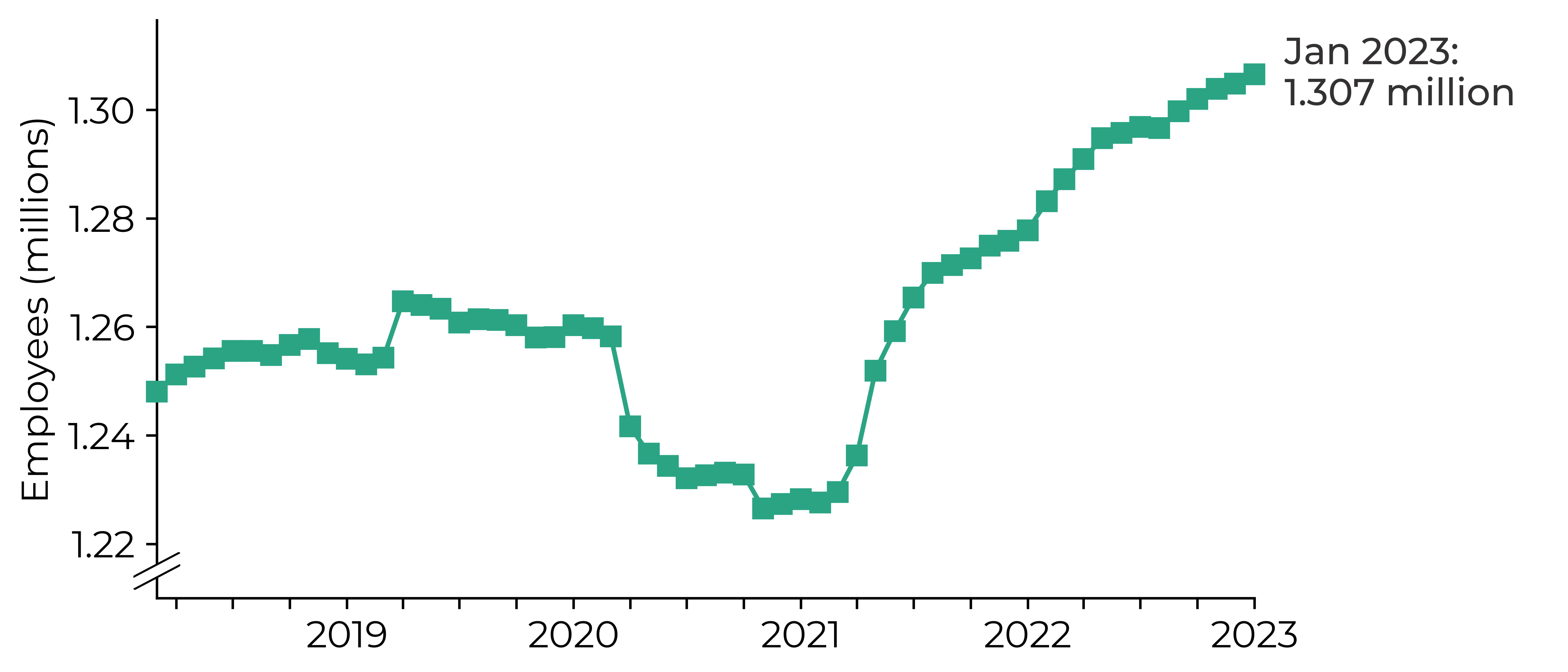
Source: ONS PAYE – seasonally adjusted
Average weekly earnings
Year-on-year increases in average weekly earnings across the UK are below the rate of inflation. Earnings data for Wales is published on an annual basis in the Annual Survey of Hours and Earnings. However the inflation rate is not available at a Wales level.
Year-on-year change in UK average weekly earnings and inflation
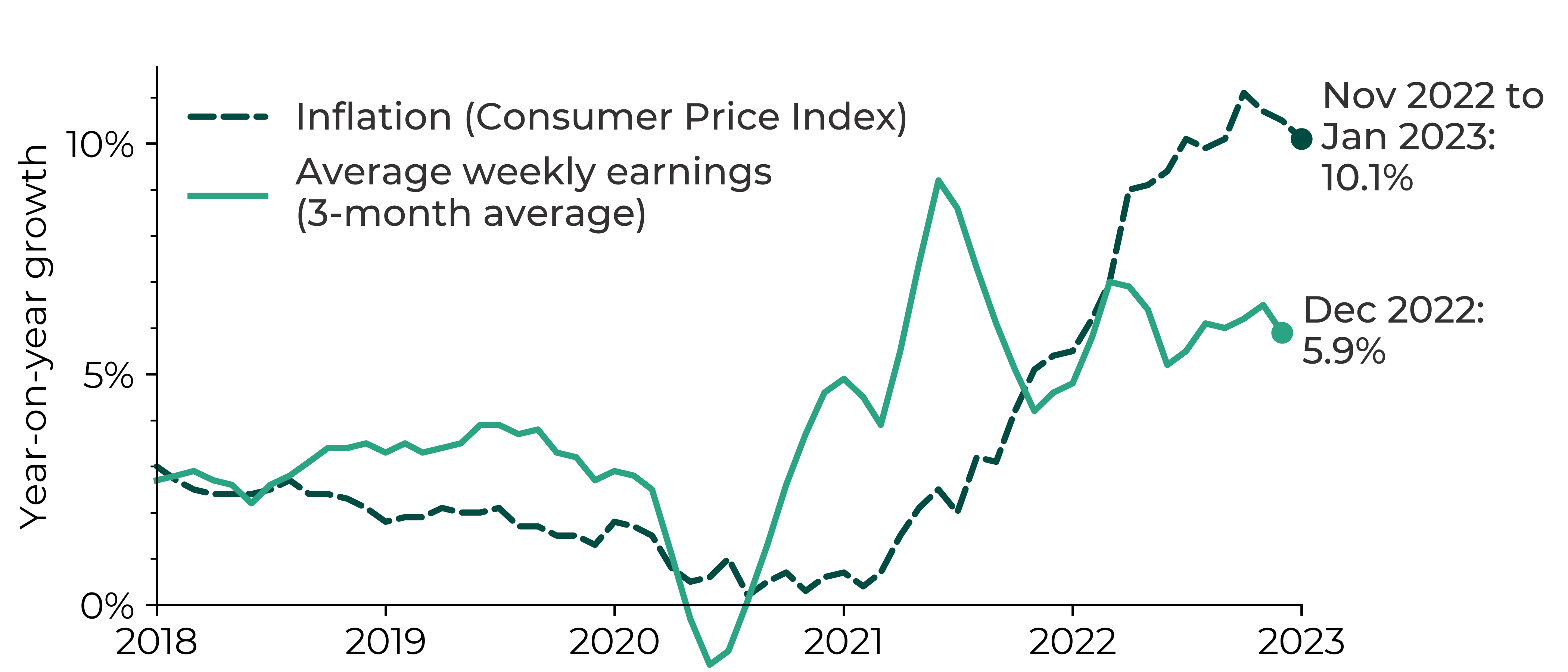
Source: Earnings and working hours and inflation and price indices, ONS
Vacancies
At a UK level ONS publishes an estimate of the number of job vacancies for the preceding three months. These estimates are based on the Vacancy Survey where ONS surveys employers across all sectors of the economy. From November 2022 to January 2023 there were a reported 1,134,000 job vacancies in the UK, a decrease of 76,000 from August to October 2022. In October to December 2022, the number of unemployed people per vacancy was 1.1, up from the previous quarter (July to September 2022).
The Vacancy Survey data is not available at a Wales level, however ONS publishes experimental indices of online job adverts. This includes information on several million job advert entries each month from across the UK, broken down by job category and UK countries. The post-pandemic surge in job vacancies peaked in November 2021 and has decreased overall since.
Index of estimated number of deduplicated online job adverts (Feb 2020 = 100)
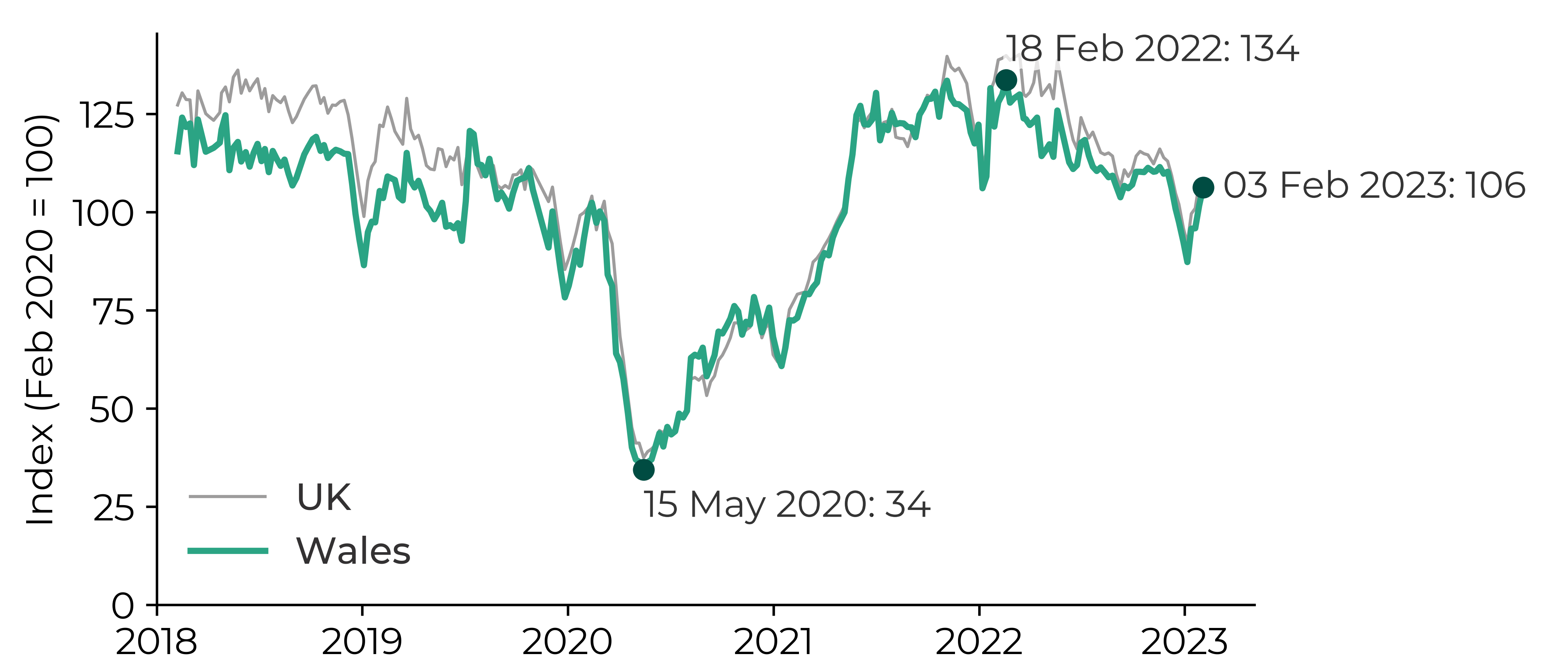
Source: Online job advert estimates - Office for National Statistics (ons.gov.uk)
Benefits claimants
As more people move from legacy benefits to Universal Credit, the claimant count measure of unemployment has changed. The experimental headline data published by the ONS covers the number of people claiming Jobseeker’s Allowance plus those who claim Universal Credit and are required to seek work and be available for work.
The claimant count more than doubled at the start of the pandemic. The numbers steadily decreased from August 2020 to July 2022. Since July 2022 the claimant count has stayed between 61,000- 64,000 with the claimant count in January 2023 standing 6% above pre-pandemic levels.
Claimant count for Wales; three years to January 2023
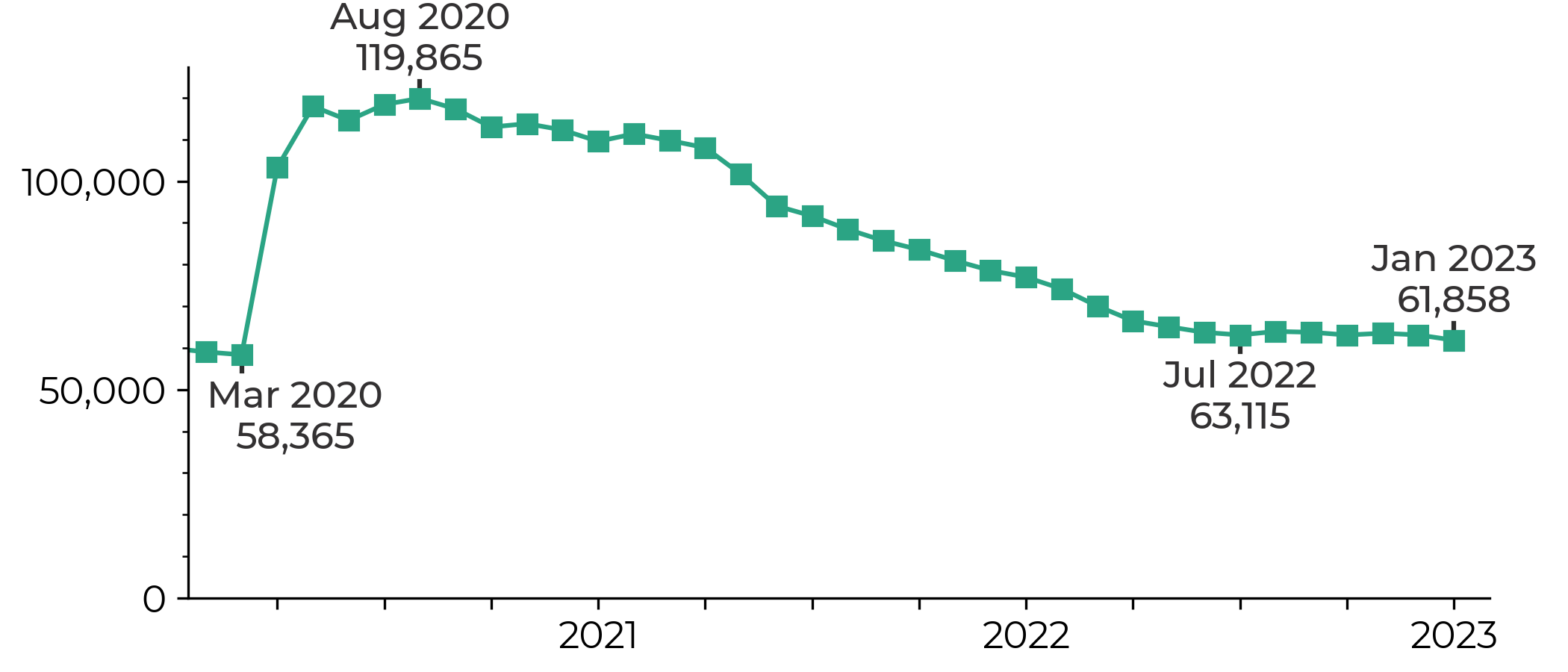
Source: NOMIS, ONS Claimant Count – seasonally adjusted
Notes: From May 2013 onwards these figures are considered Experimental Statistics. Under Universal Credit a broader span of claimants are required to look for work than under Jobseeker's Allowance. As Universal Credit Full Service is rolled out in particular areas, the number of people recorded as being on the Claimant Count is likely to rise.
Labour Force Survey
The Labour Force Survey (LFS) is a quarterly household survey of around 80,000 adults. It asks a range of questions on employment and the results have traditionally been used as the main headline indicators of the labour market.
The estimates refer to the preceding three-month period. The time lag means that the latest labour market release published on 14 February 2023 provides information from October 2022 to December 2022.
For October to December 2022 the economic inactivity rate for people aged 16-64 in Wales was 25.5%, higher than 24.9% in the previous quarter (July to September 2022). This is an increase of 10,000 people to 487,000.
Labour Force Survey headline statistics for Wales, October to December 2022
Employed
Aged 16-64:
71.8%
- - - - - - - - - - -
Aged 16+:
1,435,000
▼ 12,000
Unemployed
Aged 16+:
3.5%
- - - - - - - - - - -
Aged 16+:
52,000
▼ 3,000
Economic inactivity
Aged 16-64:
25.5%
- - - - - - - - - - -
Aged 16-64:
487,000
▲ 10,000
Changes are from the previous quarter, June to August 2022
Source: ONS, Regional labour market: Headline indicators for Wales
The LFS shows that recent unemployment levels in Wales are close to pre-pandemic levels. This is similar to the trend at a UK level. Comparing across UK nations, the unemployment rate in Wales is below England and above Northern Ireland and Scotland.
Percentage of people aged 16+ who are unemployed, UK nations; five years to October - December 2022
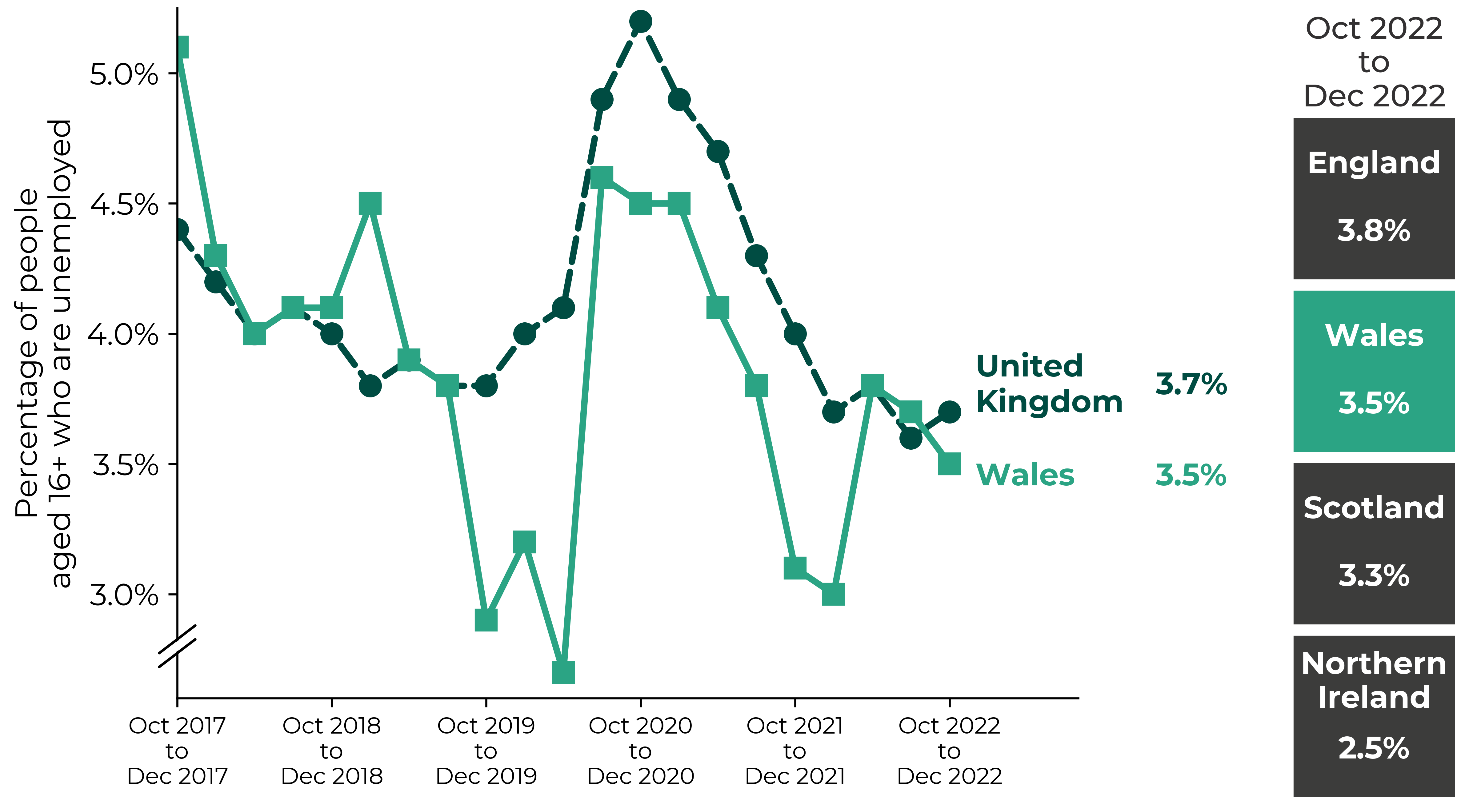
Source: ONS, Labour market in the regions of the UK
Data from the LFS is available showing the unemployment rate by sex and age for 12 months to September 2022. Due to the limited sample size, the confidence on these numbers is low. However, unemployment rates are significantly higher for males than females in the 16-24 age group.
Unemployment rate by age and sex in Wales; 12 months to September 2022
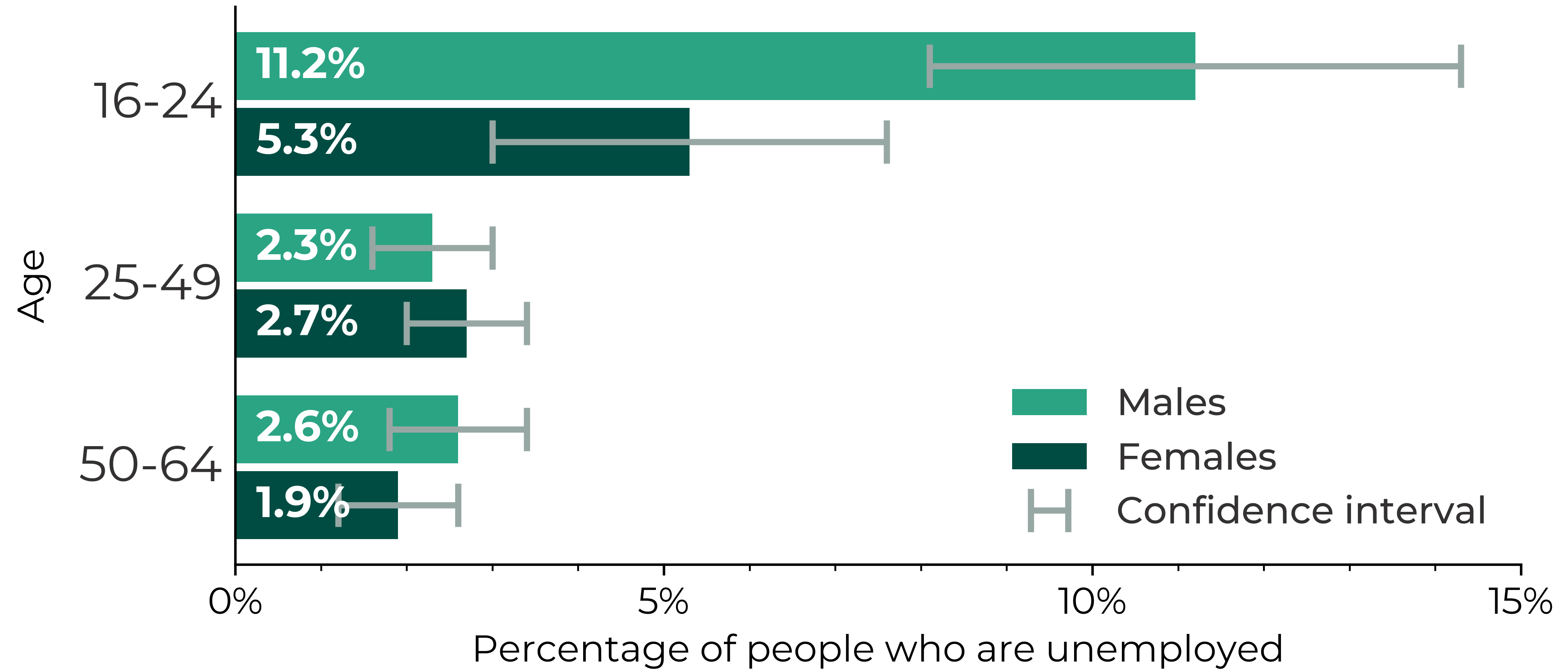
Source: Nomis
ONS explains they have made changes to the LFS:
Labour Force Survey (LFS) responses have been reweighted to new populations derived using growth rates from HM Revenue and Customs (HMRC) Real Time Information (RTI), to allow for different trends during the coronavirus (COVID-19) pandemic. The reweighting will give improved estimates of both rates and levels.
The number of unemployed people in the UK includes people who meet the definition of unemployment specified by the International Labour Organisation (ILO). The ILO defines unemployed people as being:
- without a job, have been actively seeking work in the past four weeks and are available to start work in the next two weeks
- out of work, have found a job and are waiting to start it in the next two weeks
Employment measures the number of people aged 16 years and over in paid work. The headline measure of employment for the UK is the employment rate for those aged from 16 to 64 years.
The headline measure of inactivity for the UK is the rate of those aged from 16 to 64 without a job who have not sought work in the last four weeks and/or are not available to start work in the next two weeks.
Article by Joe Wilkes and Helen Jones, Senedd Research, Welsh Parliament






